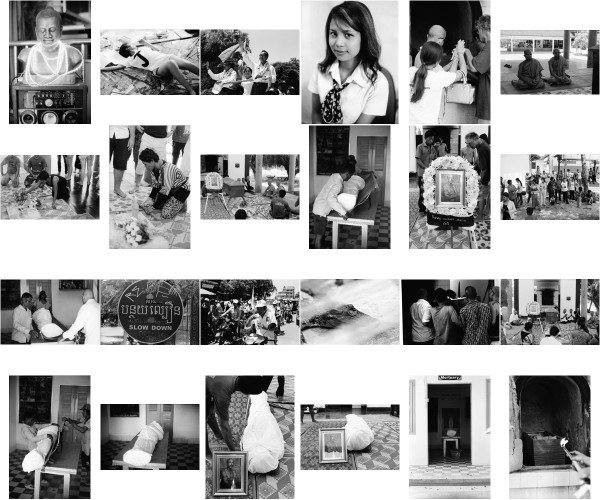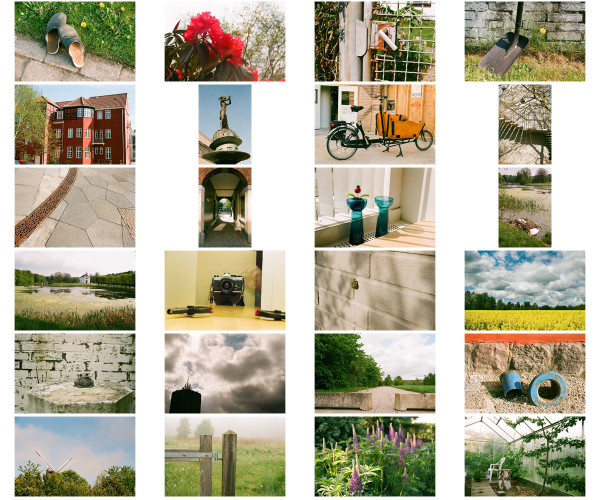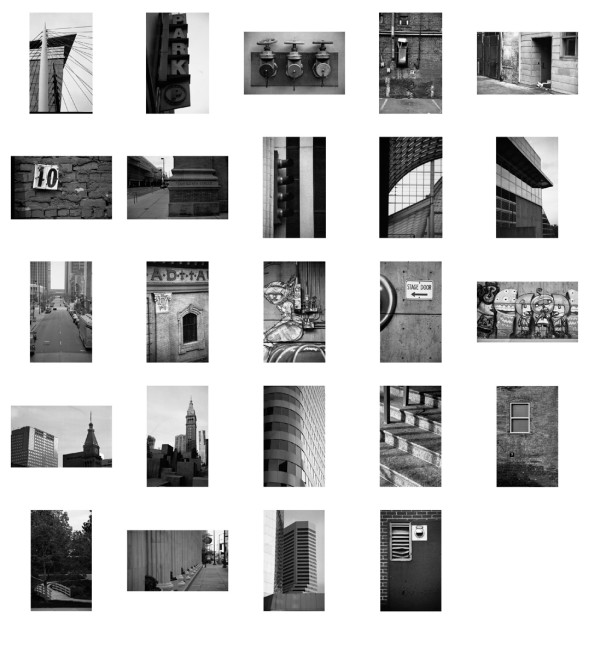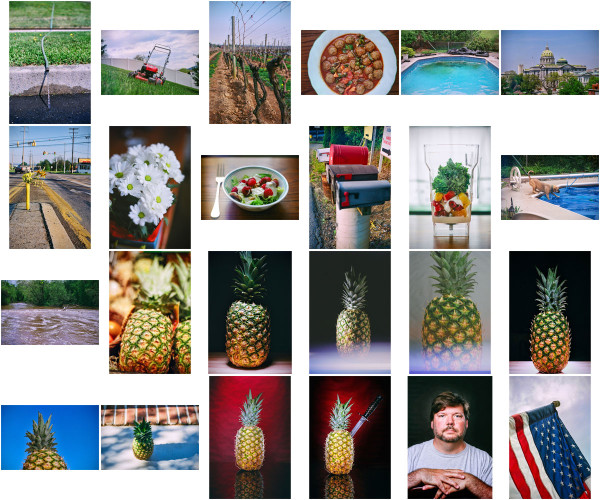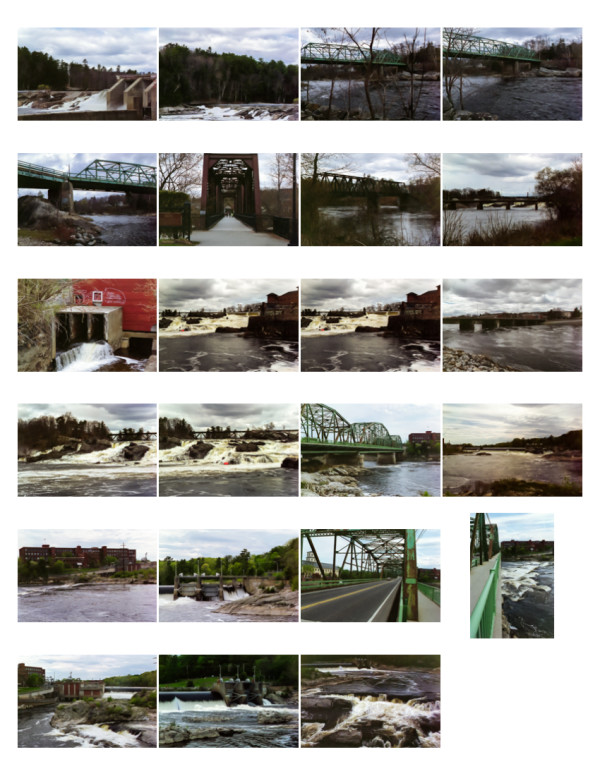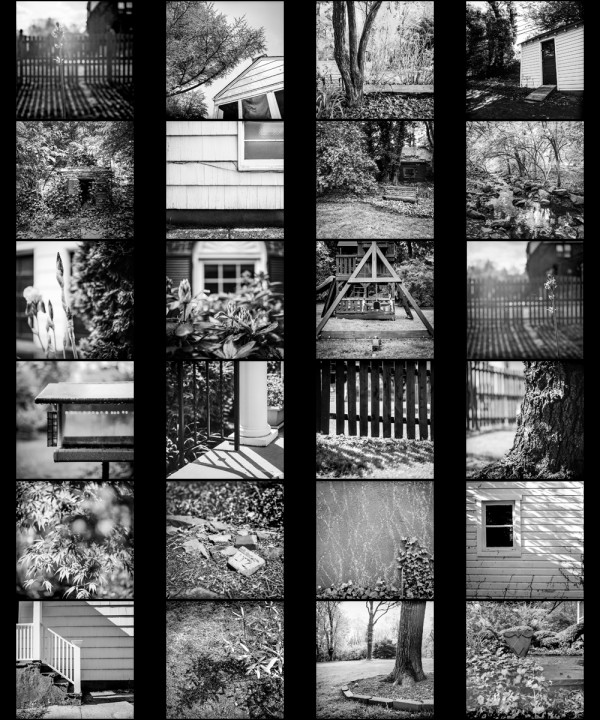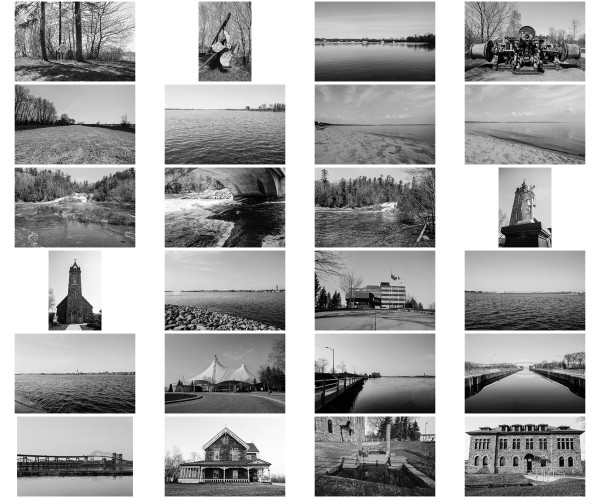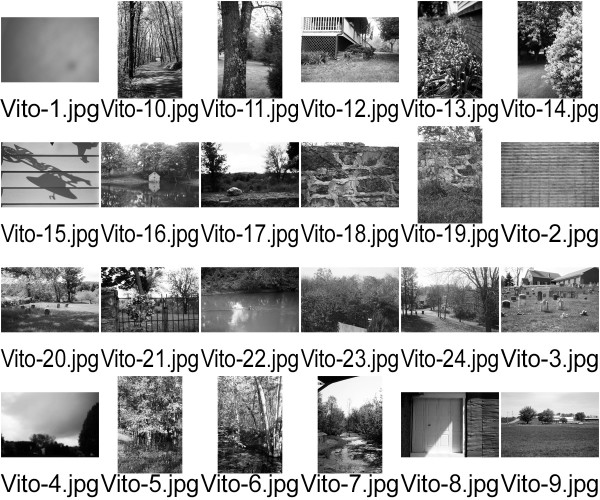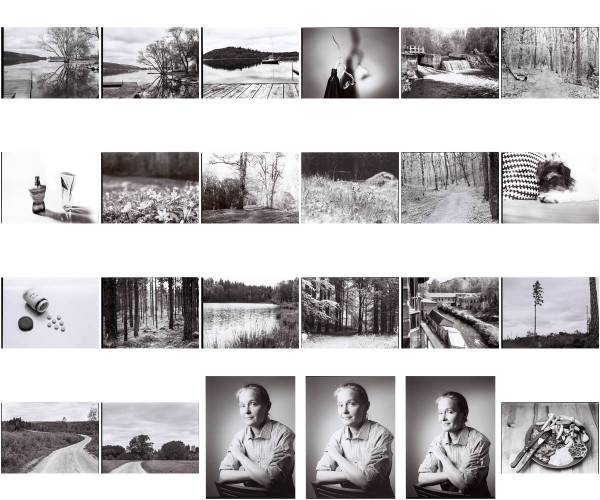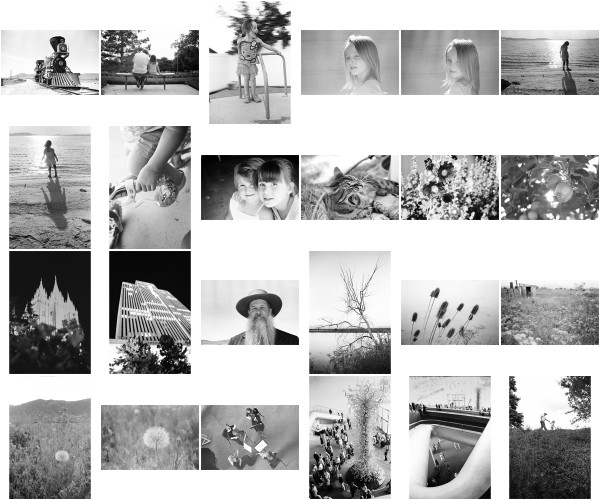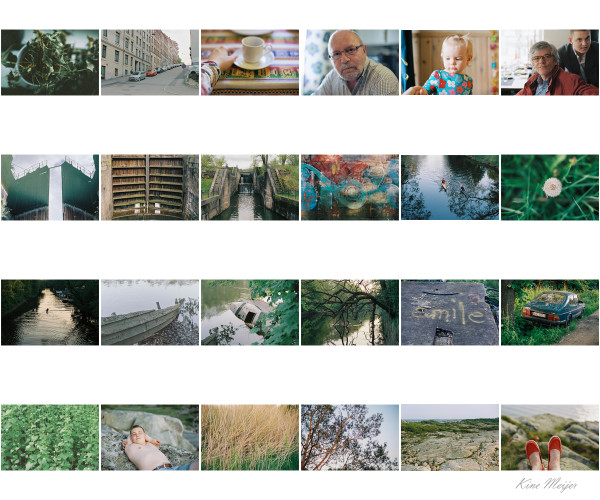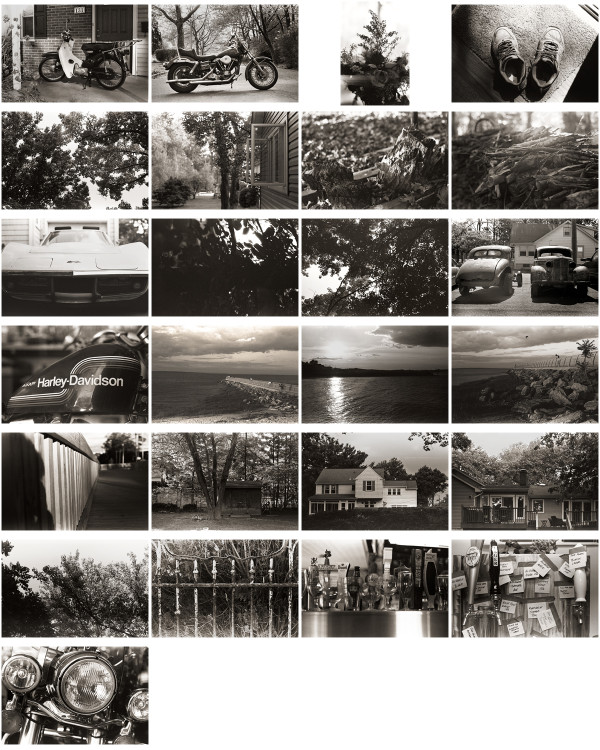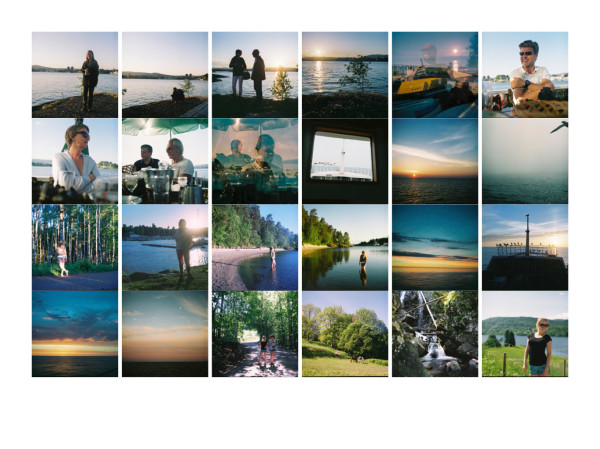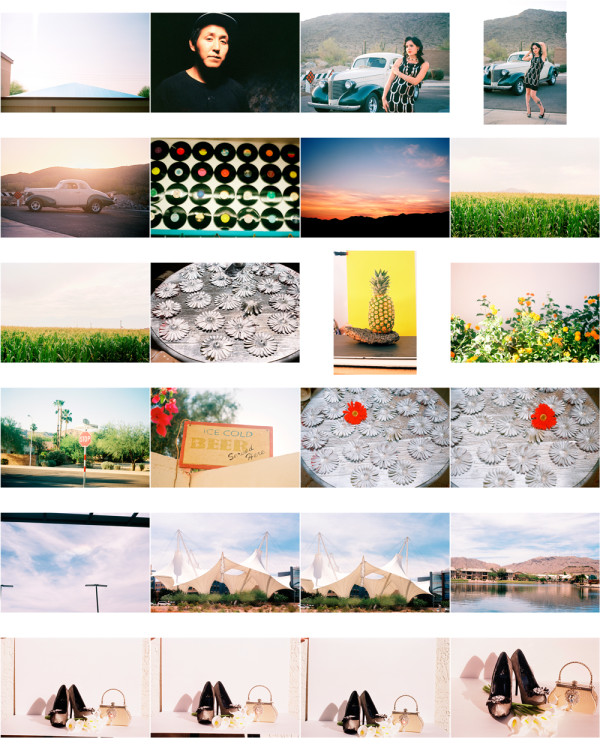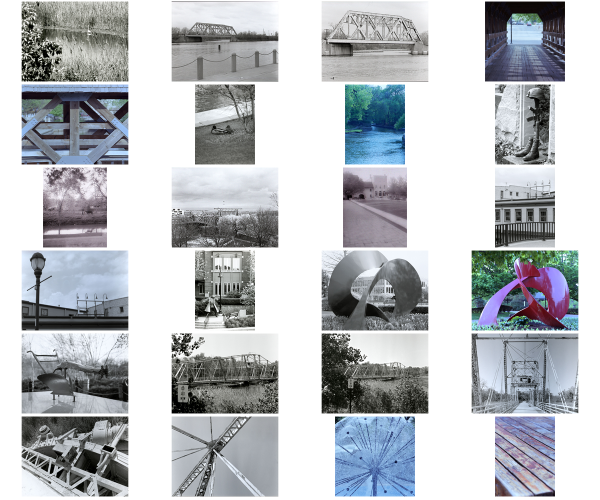The Project 52 members were tasked with shooting something different: 24 frames of film – and making every image count. This is a very exciting time with digital instantaneousness… but something can be said about taking one’s time to make an image.
Limiting the work to only 24 frames, taken over a longer period of time than one shoot, gives a photographer time to think fully about what they are wanting each and every image to do.
Enjoy this work by a very talented group of photographers:
Jorge Rodríguez Santos
- Nikon FM2n
- Lens: 50mm F1.4 AIS, 105mm F1.8 AIS
- Film: Fuji Neopan 400 processed at home.
- Scanned on Canon 9000F
- Slight cropping and straightening.
Jorge Rodríguez Santos Photography
- Siem Reap, Cambodia
- Tel: +855 (0) 926 929 05
- Email: tyrovphoto@gmail.com
- Website: www.jorgerphotography.com
The only SLR camera in the house: Olympus OM2n with a Tamron 28-70 lens, manual focus. Film: Fuji “Superia” 200 ASA. Accessory; Mickey Mouse camera strap! 😉 As an added “challenge”, the ASA dial is screwed up (not correctly aligned), so I wasn’t certain if the camera was exposing correctly. The (10-year-old) roll of film that had been in the camera showed that all of the images were underexposed. I compared exposure settings with my DSLR and set the dial so it seemed to show the correct exposure on the internal meter and hoped for the best.
I really enjoyed the deliberateness of shooting film. Slowing down. Making certain that the angle is right. Should I move here? There? Shoot high? Low? Is the shot actually in focus? Is the exposure as I would like it to be? Is it straight? (most likely not, as it turns out I suck at keeping some shots level)
So…out of the 33 frames that I shot, I picked the 24 most interesting shots for the challenge. I dropped of the film at my local camera store, and to days later I got prints and a CD-rom with the images. The images are taken directly from the CD-rom. The only adjustments made is straightening a few of the images.
If I do shoot film again (which I most likely will), I think I will want to find a theme or project to keep me focused.
Tammy Bogestrand / Website
Steve Pamp
Images from morning walks in downtown Denver between May 01 and May 25, 2014.
- Camera: Canon Rebel2000
- Lens(es) 50mm f1.8, 28-105 f3.5-5.6
- Film: Ilford XP2
- Scanned with an Epson Perfection negative scanner
- Post Processing – Minor dust removal. Convert from .TIF to .JPG.
I enjoyed this project, even though I had a rough month and wasn’t able to give it my full attention. I enjoyed it so much, that when I dropped off this roll for processing, I picked up 2 more rolls of XP2. Thanks for re-introducing me to the joy of film.
Steve Pamp / Website
Steve Gray
Camera: Minolta X-370, purchased at JC Penney in 1984.
Lenses: Mostly the 50mm f/1.7. I used an 80-200mm zoom for one shot (the dog at the pool)
Film: Kodak SuperMax 400 speed
Scan: Images scanned by thedarkroom.com and transferred electronically
Post:
I did some minor cropping and enhancement in Photoshop (with some light use of Topaz Adjust). One problem that seemed to come up regularly was a light stripe near the left side of the image. I’m guessing that I have a light leak somewhere, but it’s strange that the effect isn’t consistent across the images. When it seemed particularly bad, I tried to correct it a little in Photoshop.
Two of the studio images I made had a strange problem on the bottom of the frame – a whitish glow that I can’t figure out. I didn’t even bother to try and correct these, and they are included as they originally appear.
I started the project as something of a “shot a day” approach, trying to capture something that was happening in my small world each day. One shot – the Harrisburg Capitol Building – nearly got me arrested…but that’s another story.
Because of some other distractions, I started getting behind on the project, so I shifted to doing a still life study, and I chose a pineapple as my subject. I photographed it first at the supermarket (where I was admonished for taking photos), and then I tried several lighting styles and visual approaches with the pineapple (finally stabbing it with a bayonet…hahaha). I had a couple of shots left at the end, so I set up a quick self portrait and another “shot a day” type of image at the end.
Something interesting (to me, anyway) with the effort was the limitation of the mechanics of the camera. The fastest shutter speed is 1/1000, and using 400 speed film was a potential problem in some well-lighted scenes. To get around it, I purchased a 3-stop neutral density filter. When I was using my digital camera (5D classic) for setting up shots, I had to so the mental math to compensate for the ND filter, and adjust the settings accordingly. And for the most part, it worked! It was good to be able to do the conversions on the fly.
Thanks!
- Camera – Nikon N65
- Lens(es) – 50mm Nikkor
- Film Type – Arista 100-35 B+W
- How Scanned – sent to theFINDLAB for processing and scanning
- Any Post Processing added – no
Michelle Cushman / Website
This project starts with a photo of the shed at my house that I have captured with my iPhone at various times during this past year. I was curious as to how it would look on b/w film. I took a few scenic shots about halfway through our seven hour drive just outside of Williamsport, PA. The family shots before going to church turned out fairly well and I am happy with those. I included an accidental shot (crooked shot in a parking lot) because well, you can’t delete those that are taken like you can on a digital camera. The series ends with a photo of the house I grew up in, a few shots from breakfast the morning we left to go back home as well as my entire family (minus me) and a few more scenic shots from a rest stop in Pennsylvania.
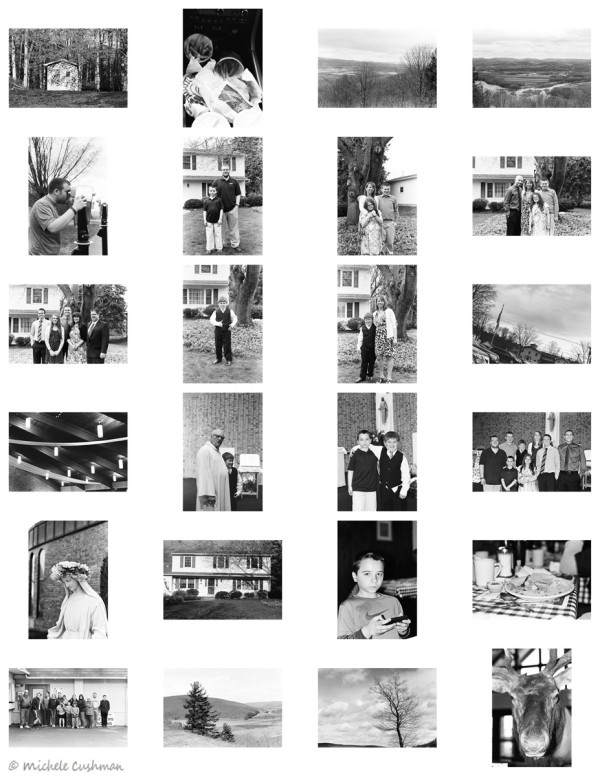
The bridges and falls on the Androscoggin river project was photographed between Lewiston and Brunswick Maine, I think I will extend the project as time permits.
I shot this images on a 15 year old Fuji color film ISO 400, camera was Nikon F4 with 28-85mm f3.5 lens.
Alfred Kypta / Website
- Camera information: Mamyia 6
- Lenses: 50mm, 75mm and 150mm.
- Film: Fuji Neopan Acros 100
- Processed in Kodak XTol 1+2 dilution at home in a Jobo CPE2
- Scanned: using a light table and Hasselblad H4D
- Postprocessing: dust removal and contrast correction in Photoshop CC
Website: www.robdavidsonphotography.com
Facebook: https://www.facebook.com/pages/Rob-Davidson-Photography/119996528053845
Instagram: rob_davidson
Twitter: @robdphotography
- Film: Fujicolour Superia 200
- Camera: Minolta X-700
- Lens: 24mm F2.8 MC w Rokkor-X
Processing:
- Converted to B&W using one of the default presets in Lightroom 5.
- Adjusted exposure -0.8 stop
I liked the feel of this camera in my hands, and I love the lens. I only have cheap kit lenses for my Nikon D90, so shooting with the Minolta glass was a pleasure.
Almost all images were taken at F8. I used my sekonic meter, to set the camera. I found that the meter in the Minolta, was slightly different that the sekonic. I think I tried to average the two. In the end, I should have just followed the sekonic. I found that every exposure was over exposed by about a stop. I found the images to be a bit boring in colour, so I converted them to B&W. Also, I had to rotate every image -1 degree.
Anyway… this was fun. I am a bit disappointed in the scans however. The company I used to develop the film scanned them in at a relatively small size.(1544 X 1024)
Thanks, Rob
- Voigtlander Vito II circa 1951
- 50mm
- TriX
- scanned by processor
- boosted contrast a bit
Reed Waters / Website | Reed’s Facebook Page | Images on Flickr
- Camera: Yashica Electro GTN
- Lens: 45mm 1.7
- Film: Kodak Porta 400
- Scanned by Photographique (www.photographique.co.uk)
- Post-processing: some cropping, straightening and curves adjustment
Chris Dean / Website
Email: chris@chrisdeanphoto.co.uk
Twitter: @chrisdeanphoto
Instagram: @chrisdeanphoto
Larger version of the photos: Flickr
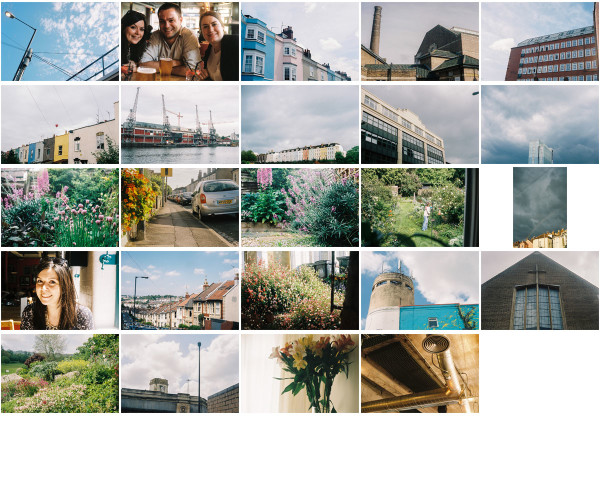
- Camera: Bronica 645
- lens: 75mm
- Film Kodak b/w Tmax 100 and 400
- Scanned by lab (Crimson, Stockholm, Sweden)
- Processed in ACR and PS.
Tomas Jansson / website:
- Camera: Minolta Maxxum 5
- Lens: Minolta 28-90mmD
- Film: Ilford HP5 400 B&W
- Scanned by the lab
- A few crops in post processing
Nicole Fernley / website
- Camera: Nikon F4
- Lens: Nikon 50mm f/1.4D
- Film: Portra 400
- Scanned: At the lab
- Post processing: Small global adjustments in contrast and color (CS6)
Kine Meijer / website
email: kinemeijer@hotmail.com
- Camera: Konica T4 circa 1980
- Lens: Hexanon 1.7 50mm
- Film: Kodak Tri X Pro 400 ISO, dated 2003
- Processing: Self developed myself with the help of Rob Davidson
- Scanned by Rob’s scanner, also a classic
- Post processing: contrast, curves, levels in PS, along with a lot of dust removal
Greg Pastuzyn / website | Insidious Tomatos
Click here to learn more
- A Honda 70, “You meet the nicest people on a Honda”
- 1976 Super Glide
- Dying flowers with an unexplained light streak
- Old sneakers
- Tree limbs and leaves, I think the light was interesting that didn’t come across in the image
- Open windows
- Rotting logs, the rising sun was casting an interesting light on them
- Wood/stick pile, again the rising sun was casting an interesting light on them, doesn’t look like it came across
- 1968 Corvette, could have used the help of some reflectors for the grill
- I have no idea, don’t remember taking this shot and not sure why
- More tree limbs and leaves, again, the light was interesting and I didn’t realize I had already gotten a shot of this
- Old cars with some lens flair
- 1975 Sportster gas tank
- Pier at sunset
- Sunset on Raritan Bay
- A different angle on the pier
- Railing
- Shed in backyard, I liked the way the light was playing on the leaves
- Can’t see it, but there were ominous clouds over the house
- Another attempt to capture the ominous clouds over the house
- Another light playing in the leaves. Most likely I was sitting on the deck, a few beers in, reading the paper when I noticed the light
- Rusted iron gate, loved the texture
- Beer tap handles in a local pub
- My kegerator tap handles
- 2001 Roadking
- Shot with Yashica D TLR
- 120 film, Fuji 160 color neg
- Scanned by the lab.
- Only very small WB and exposure changes done in LR on 4 images, the rest are untouched.
Rasmus Hald / website Link to the images gallery Facebook page
Dennis Mong
This was a fun challenge. I have been taking pictures with film for most of my life, but only making photographs for the last three years or so. Learning to “write” with light is quite a bit more challenging than documenting a vacation or family gathering. My recent learning was all accomplished with digital. My first dslr was a Rebel T3 with the 18-55mm kit lens and before that a Sony pocket camera. I didn’t realize how far back I would have to go in order to shoot a simple roll of film.
Rewind about two years, no, make that 20, err 50, oh forget it, let’s go back to the beginning. 1937, the year my Leica was made and sold. My grandfather took possession of it from his wealthy employer in the early 1950’s and it dangled around his neck every time I saw him as a kid. I didn’t think much of it at the time, other than why would it take so long to take a single picture. How many light meter readings did he need? Well, my grandpa passed away about 20 years ago and the camera changed hands and bookshelves a few times before it arrived in the mail to me about two years ago.
I wanted to use it, but it seemed so daunting. It is a bottom loader and the film has to be cut a certain way so as not to damage the shutter. Problem. At some point a spring broke and the take-up spool would slip when advancing past the second frame. Off for repair. Thank you, Joe Wojcich @ Tempe Camera. This left me with time for only one practice roll. I ran a roll of Tri-X 400 without a hitch. Next up was Kodak Ektar 100 for this project.
Huge thanks to Don for putting this project together and letting me borrow the Mamiya on the trip. That’s what really got me going!
Dennis Mong / website
- Camera – Mamiya 645
- Lens(es) – Mamiya “C” 45mm, 80mm, 210mm
- Film Type – Kodak Ektar 100 (120). Kodak Tri-x 100 B+W (120), Ilford HP5 160 (4×5)
- How Scanned – Epson V500 self scanned
- Post Processing added – it varied from image to image
Keith Knasiak/ Website
One key reason I started working with film is that some element of photography was missing for me in this new digital age. Don’t take me wrong, I enjoy shooting digital but I guess a I missed the more tactile sense I feel when developing my own film.
Each of these images were processed by me prior to digitization. This is also the first time I have made any attempt at developing color negative film. I had a blast. I learned a lot. One of the most important things that I learned is that I need to hone those rusty old darkroom skills. This is the main reason for the post processing after digitizing that I did. A second important lesson is that I really have a lot, lot, lot to learn about the use of view cameras. And finally and probably the most important lesson was just how much fun photography can be in all of its wonderful manifestations.
Some of our photographers didn’t get their film processed in time. I will add their work as it comes in.
Film is not digital… the shooting of film is a different experience. One that is involves different approaches to the creative process. We cannot see the images when they are taken, so we have to be very deliberate in our approach. It is a slower, more measured approach to making images… one that involves time. The time from exposure to actually seeing the images is an important part of the process. Some enjoy that part of the process.
Very proud of the Project 24 folks who joined in this project and shared their contact sheets with us.

